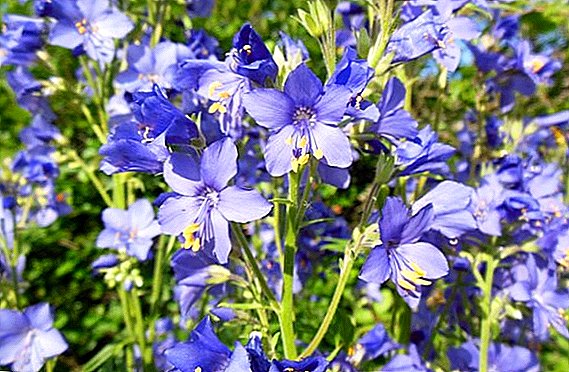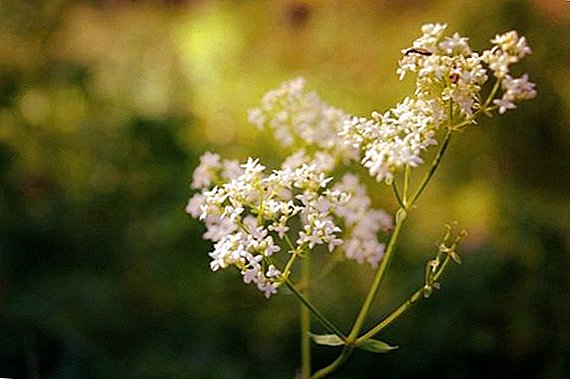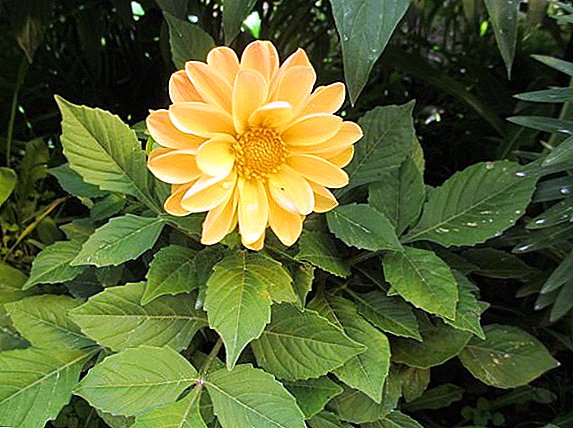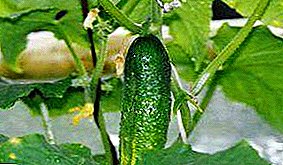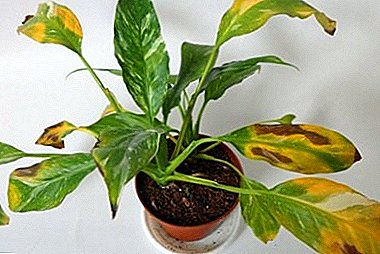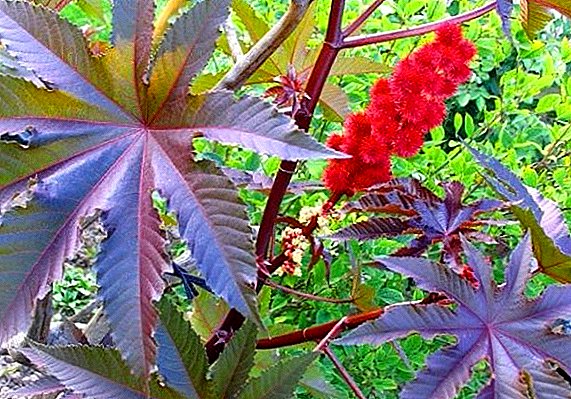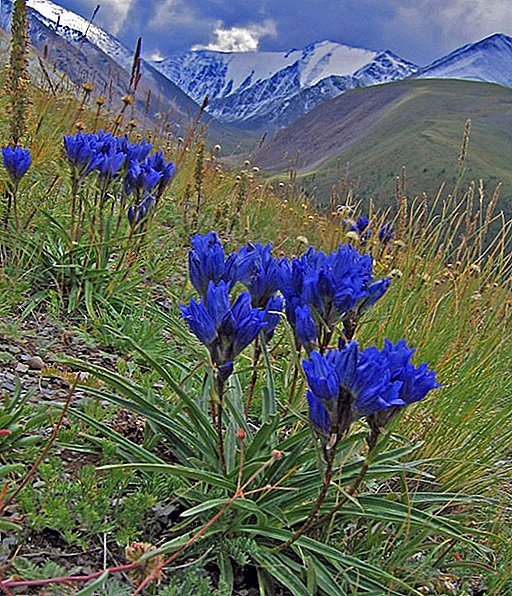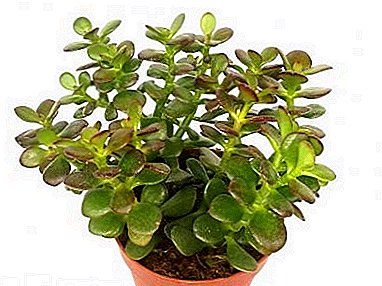
At home, you can grow any plant, if you carefully care and take care of it.
Quite often in the home gardens and on the window sills you can see a beautiful and original fat woman (Сrassula), or as it is called in the people - "Money Tree". This is a unique representative of succulents, which has more than 300 varieties.
For its compactness and attractive appearance, many have liked the fat woman Crassula minor. It grows slowly and is not very demanding to care. Choosing this type of "money tree" to fill a miniature home garden, you should know the basic rules of caring for them. This will provide the plant a comfortable environment for growth.
Characteristic
Crassula Crassula minor (Crassula Minor) - artificially bred variety, which is a type of Crassula ovata. The leaves of the plant are rather small - no more than 1.5 centimeters in length and 1 centimeter in width. They are oblong. The color is very interesting, which allows you to complement any garden composition with a curved leaf - the edges of the leaf above and below are framed in red and the middle of the leaf is dark green. Depending on the lighting, the indoor plant changes its shade.
The trunk of a young fathead minor in green, fleshy and soft. Over time, when the lower leaves die off, it becomes bare and stiffens. This property of the plant allows for the formation of miniature trees as it grows.
Home care

To grow a healthy and beautiful "money tree", which, according to many popular beliefs, attracts financial well-being into a house, it is impossible without proper care for it. These are elementary actions that will not take much time, but will provide the plant with necessary nutrients and create comfortable conditions for growth.
First you need to choose the right fat man in the shop. About the health of the plant says its appearance.
Leaves must be resilient, free of stains and coarse plaques, free from insects and parasites. The trunk is elastic, without flaccid areas and depressions.
Landing
After purchasing Crassula minor, it should be transplanted into suitable soil. Usually they take ready soil for cacti or prepare the substrate on their own: 1 part peat, leaf and sod land, and 0.5 part sand. The soil must be well drained; for this, small broken bricks or charcoal are poured into the pot.
Regular transplantation of the crassula minor is carried out annually in the spring by the method of transshipment, keeping a piece of earthen coma at the roots.
Watering
The fat woman needs a specific watering. Excessive intake of fluid can lead to the death of the "money tree". Moisten the soil should only be when it has dried to a depth of more than 3 centimeters.
From spring until the end of the autumn, the podya minor minor is watered once every 1-2 weeks.as soon as the soil needs it. In winter, when the plant is transferred to a cool room, it only needs to moisten the soil mixture once a month.
Do not allow and drying earthen coma, so as not to damage the roots of Krassoula. If the plant lacks moisture, it immediately becomes noticeable on the darkened leaves, which frown and cease to shine.
Excessive moistening threatens with rotting of the root system and stem.
Cropping and crown formation

Crassula minor easily lends itself to crown formation. This allows you to make it a real decoration for home mini-garden. As soon as 3-4 pairs of leaves grow on the sprig, the next bud is picked off. 3-4 buds are formed again at this place, and the plant will branch in different directions.
Long branches of junkie can be trimmed. To do this, use a sharp knife or blade, and the place of the cut necessarily sprinkled with wood or crushed activated charcoal.
Air humidity
Crassula minor, like all members of the family of succulents, do not react to the humidity of the air and do not need to spray the leaves. Irrigation can only be used as a means of washing the crown from dust.
Fertilizer and dressing
In winter, the fat man minor is fed with a universal fertilizer or cactus nutrient solution, using half the dose. It is enough to carry out the manipulation once a month to provide the plant with the necessary supply of auxiliary substances. In the spring and summer, fertilize with a full dose 1 time in 3 weeks.
Light mode
Crassula minor photophilous. In the summer, from the scorching sun it should be pritenyat to avoid burns on the crown. In winter, the plant is exposed to a well-lit place or illuminated with a lamp to compensate for the lack of natural light.
Thermal mode

Tolstyanka is a heat-loving plant. In the summer, a comfortable temperature for Crassula is considered to be 20-25 degrees above zero. In winter, the succulent should provide a lower temperature - up to 15 degrees, so that the plant is well wintered.
Breeding methods
Breeds shanks and leaves reproduce. These are the easiest ways to guarantee the rooting and further growth of the plant.
The leaf is cut off and put into the water for a day. Then it is transferred to a pot and sprinkled with earth. Watering plentiful.
Reproduction by cuttings is not less simple. The stalk is separated from the plant, dried for 1-2 days and mixed into a mixture of earth and sand or into a prepared mixture for cacti. The first watering is carried out after 3 days, allowing the plant to adapt slightly. The following soil moistening is carried out as it dries.
Bloom

The "money tree" blooms only in the elapsed or twelfth year of life. The plant produces an arrow with small flowers. This phenomenon can be observed only in the summer.
Diseases and pests
Crassula minor is subject to parasitic diseases. Its leaves are often attacked by a scythe, a spider mite, aphid, the root system affects the root and mealybugs, fungi. Signs of the disease can be not only visual insects and their metabolic products on the surface of the crown, but also lethargy, decay, spots on the foliage.
Much more difficult to get rid of the fungus that struck the root system. The reason for its appearance and distribution can be excessive watering with cold water immediately from the tap. If a fungus is damaged by a fungus, it should be pulled out of the pot, free the roots from the earthy coma, washed, treated with special antifungal agents and transplanted into a new soil mixture.
Crassula minor for the proper development and growth requires human assistance. This miniature and original plant will be a bright addition to the garden of "live stones" of succulents or will be pleasing to the eye with a single formed tree.
A photo







